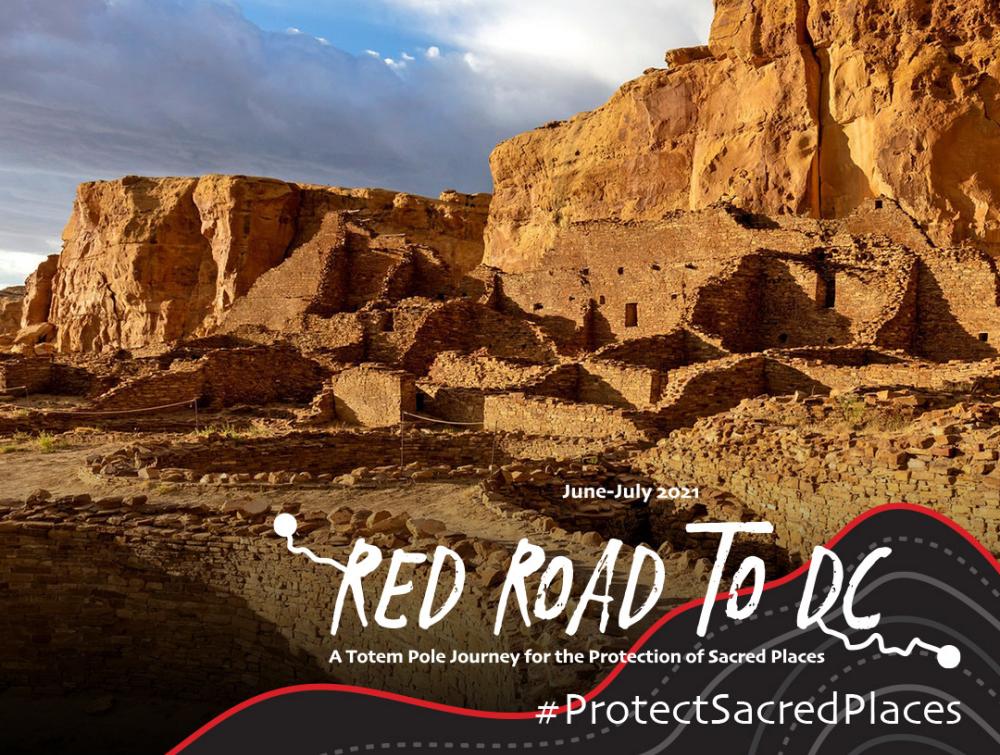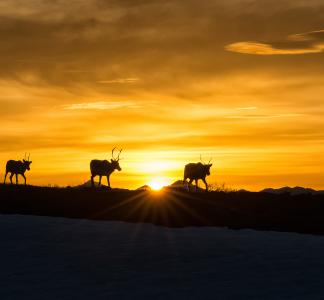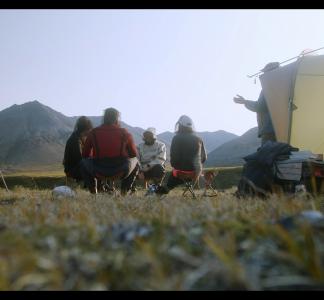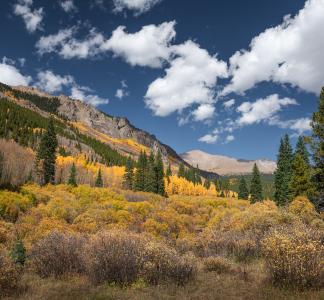Message carried along “Red Road to DC”: Protect Indigenous sacred places now

Red Road to DC
Arctic Refuge, Bears Ears, Tongass, Badger-Two Medicine among those in spotlight
The totem pole headed to the nation’s capital this summer is less than 1/20th the height of the Washington Monument. It doesn’t capture a politician’s visage in white marble. You won’t even find a handy gift shop built into its lower recesses.
But though it differs from traditional Washington, DC, monuments, the “Red Road to DC” totem pole is a singular medium carrying a powerful and urgent message: we need to protect Indigenous sacred places now, before it’s too late.
LEARN MORE: Red Road to DC: A totem pole journey for the protection of sacred places
The nearly 25-foot totem pole is set to depart the Lummi Nation, in Washington state, on July 14 and proceed along a planned route of sacred and culturally important places that are at risk due to development, climate change and other threats. Red Road to DC organizers have compared the totem pole to a battery that charges as it visits sacred sites then disperses some of that power to the people awaiting it at each stop. Once it reaches Washington, DC, it will serve as a beacon reminding elected officials—including President Biden—to prioritize policies that protect these lands and work with Native Nations as equal partners moving forward.
The totem pole has already been the focus of virtual rallies touching on places including the Arctic National Wildlife Refuge and Tongass National Forest, in Alaska, and Badger-Two Medicine in Montana. In the coming weeks, it will visit Snake River (Idaho), Bears Ears (Utah), Chaco Canyon (New Mexico), Black Hills (South Dakota), Missouri River (South Dakota), Standing Rock (North Dakota), White Earth (Minnesota), Bay Mills (Michigan) before arriving in Washington, DC, on July 29.
The House of Tears Carvers, in the Lummi Nation, crafted the pole early this year. It consists of a series of symbolic images that collectively aim to “encourage the idea that ‘All Things Come Together in a Society of Justice,’” according to lead carver Jewell Praying Wolf James.
It’s a message needed now more than ever. We will work to see it translated into policy by supporting Indigenous sovereignty and the efforts of Native Nations to ensure their physical and cultural survival, whether helping to permanently protect the Arctic Refuge, ban disruptive oil and gas drilling around Chaco Canyon or restore Bears Ears National Monument.
Liberty Mutual must take public stand for Indigenous rights and the Arctic Refuge
Peter Mather
Film highlights threat of oil drilling to Alaska Native communities
We Don't Give Up
Cheyenne and Arapaho Tribes call to rename Colorado’s Mt. Evans and reckon with its namesake’s violent legacy
Mason Cummings



